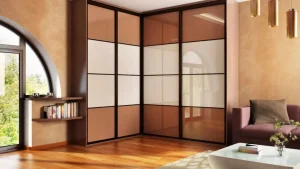In the ever-changing world of interior design, wood veneer panels stand out as one of the most effective ways to add sophistication without breaking the bank. These panels deliver the look of real wood while offering flexibility, lighter weight, and easier installation compared to solid boards. More importantly, they allow homeowners and designers to experiment—creating feature walls, built-in furniture accents, or even subtle trims that turn a plain room into something memorable.
The Modern Take on Veneer
Decades ago, veneer was often associated with inexpensive furniture that tried to mimic hardwood. Today, that image has completely shifted. Modern veneer panels are crafted with precision, showcasing beautiful grains and durable finishes. Instead of being a compromise, they are now a design choice in their own right.
The appeal lies in their adaptability: whether your style leans toward clean Scandinavian simplicity or bold mid-century patterns, there’s a veneer finish that fits.
Where Veneer Panels Make the Most Impact
Feature Walls: A living room instantly feels curated when one wall has wood panels instead of plain paint.
Ceilings: Often overlooked, a veneered ceiling can add unexpected richness.
Furniture Fronts: Many designers clad cabinet doors or wardrobes with veneer panels for a custom-built look.
Small Spaces: Veneer adds depth and texture without overwhelming tiny apartments or compact offices.
Because the panels are thin, they don’t “eat up” square footage, which is a major advantage in urban homes.
Creating Atmosphere with Veneer
One of the greatest strengths of veneer is its ability to change a room’s mood. A light oak veneer makes a studio apartment feel airy and larger. Deep mahogany tones create a more formal, grounded vibe. And when paired with clever lighting, even the simplest veneer panel installation feels high-end.
Designers often emphasize the tactile quality of veneer. Unlike flat paint or synthetic laminates, wood grain invites touch and visual exploration. This sensory connection makes a home feel more welcoming.
Practical Benefits Beyond Beauty
Veneer panels aren’t only about aesthetics. They also offer:
Durability: High-quality veneer resists warping better than some solid woods.
Cost-effectiveness: They use less natural wood while delivering the same visual richness.
Customization: Panels can be cut, shaped, or finished to match specific needs.
Acoustic benefits: Similar to wall panels, veneer reduces harsh echoes in open-plan areas.
These practical aspects explain why architects and interior designers rely on veneer not only in homes but also in hotels, offices, and retail spaces.
Styling Tips: Getting Veneer Right
Mix and Match: Pair veneer with stone countertops, metal fixtures, or glass for contrast.
Balance: Use veneer in moderation; one strong feature is often more effective than covering everything.
Orientation: Vertical panels make ceilings appear taller, while horizontal layouts emphasize width.
Finish Matters: Matte surfaces feel more natural and modern, while glossy finishes lend a formal touch.
Even small details—like veneered shelves or trims—can create harmony in a room’s overall design.
Sustainability and Conscious Design
As more people pay attention to eco-friendly choices, veneer panels provide a sustainable option. Because they use a thin slice of wood adhered to a stable core, they maximize yield from each log. Many manufacturers now carry certifications that ensure responsible sourcing. Decorative panels are also becoming increasingly popular for those who want both sustainability and style.
For design lovers, this means you can enjoy the luxury of natural wood while minimizing environmental impact. It’s a win-win: beauty without unnecessary waste.
Veneer in Different Styles
Minimalist Homes: Pale ash veneer blends seamlessly with clean lines and uncluttered layouts.
Rustic Interiors: Knotty oak or reclaimed-look veneers bring character and warmth.
Luxury Spaces: Dark veneers combined with brass or marble scream sophistication.
Eclectic Designs: Mixing veneer with bold colors and patterns creates visual excitement.
The adaptability of veneer panels is part of why they’ve become a go-to material across design styles.
Why Veneer Has Staying Power
Trends in paint colors and wallpapers come and go, but wood remains a constant symbol of comfort and elegance. Veneer’s ability to capture this essence while staying versatile ensures it won’t fade from relevance. Whether you’re updating one room or planning a full renovation, veneer panels are a material worth considering.
They remind us that interiors aren’t just about function; they’re about how we feel in our spaces. A thoughtfully chosen veneer panel can elevate a home from ordinary to extraordinary, making every day just a little more beautiful.






